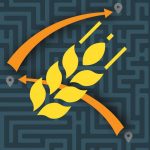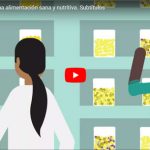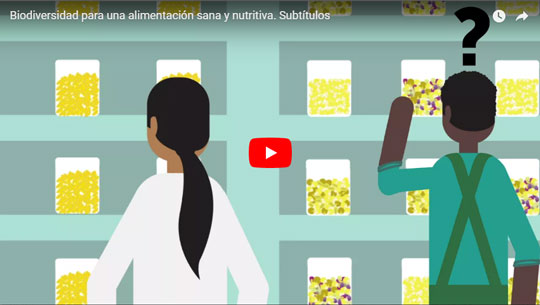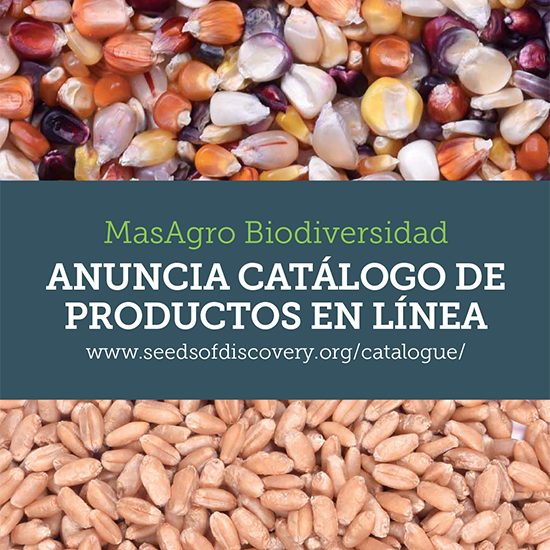-
Presentations
- From collection to cultivation: exploring and expanding the use of native maize diversity in breeding. Link
- Seeds of Discovery: A platform for enhanced use of genetic resources
- Identifying a diamond in the rough: studying allelic variation for complex traits in maize landraces
- Inbred line development in landraces.
- From genebank to field- leveraging genomics to identify and bring novel native variation to breeding pools
- MasAgro Biodiversity. Achievements and Opportunities: Maize
- Atlas Molecular- advances and applications
- Next generation genotyping to enable use of maize genetic resources
- Seeds of Discovery/MasAgro Biodiversidad: Discovering and enabling the use of maize and wheat genetic resources.
- Comparison of strategies for discovery and utilization of useful genetic material from maize landrace populations
- SeeD: A learning model towards effective and equitable of genetic resources.
-
Presentations
- Exploring maize genetic resources for novel resistances to drought.Link
- Letting the genie out of the maize genebank bottle.Link
- Seeds of Discovery (SeeD): Harnessing Biodiversity for Food Security.Link
- Partnerships, Synergies and Investment Needs.Link
- Current state of using plant genetic resources in modern breeding programs and the pioneering role of SeeD.Link
- Seeds of Discovery (SeeD).Link
- Maize Phenotyping under the Seeds of Discovery Initiative: The Brute Force Method.Link
- Seeds of Discovery: A platform for enhanced use of genetic resources.Link
- The Maize Molecular Atlas.Link
- MasAgro-Biodiversity – Maíze. An initiative to systematically explore and mobilize novel genetic variation into maize breeding programs.Link
- Genomic exploration and use of genebank collections for breeding: Early insights and experiences from Seeds of Discovery-Maize.Link
-
Presentations
- Characterization of yellow rust resistance (Puccinia striiformis) of Mexican varieties.Link
- MasAgro Biodiversity Wheat. The value of exotic germplasm in breeding lines: key in the development of wheat varieties resistant to climate change.Link
- Accession rareness, allele specificity and core set selection with an information theory approach: application to wheat marker data.Link
- Genotyping of inbred lines of Novasem/CIMMYT maize.Link
- MasAgro Maíze.Link
- MasAgro Biodiversity. Achievements and Opportunities. Biometrics and Statistics Unit.Link
- MasAgro Wheat. International Strategy to Increase Wheat Yield.Link
- MasAgro Biodiversity. Questions to discuss.Link
- MasAgro Biodiversity. General Meeting 2017. Summary and Closure.Link
- MásAgro Biodiversity. The coffee project.Link
- Más Agro Biodiversidad. Summary 2017.Link
-
Presentations
- MasAgro Biodiversidad Meeting 2017.Link
- MasAgro, a model from Mexico to the worldLink
- MasAgro Biodiversity. Objectives, past and present.Link
- Characterization of Flour Wheat Lines Selected Under Heat and Drought in Localities of Central Mexico.Link
- Technical Cooperation between Mexico and Germany: Integration of Biodiversity in Mexican AgricultureLink
- MasAgro Producer 2017 General MeetingLink
- MasAgro Achievements and Opportunities of Maize General Meeting 2017.Link
- MasAgro Biodiversity Achievements and Opportunities of WheatLink
- MasAgro Biodiversity. Achievements and Opportunities. Data, tools, and capacity building.Link
- Center for the Conservation of Plant Genetic Resources in Western Mexico. CUCBA germplasm bank.Link
- Use of the KDSmart Application in Agricultural Experimentation.Link
News
NEWS
- Wheat phenotyping workshop
The International Maize and Wheat Improvement Center (CIMMYT) extends a cordial invitation to participate in the training workshop "Wheat phenotyping for the identification of germplasm with high yield potential and tolerance to drought and heat". This will be held in CIMMYT HQ, Texcoco, State of Mexico, on September 28th, 2018 (from 9:00 – 14:00 hrs) as part of the II Plant Breeding Symposium México 2018 (https://trasmejoragen.wixsite.com/inicio) The objective of this workshop is to train participants in the phenotypic characterization of wheat germplasm. Research themes include: climate change; priority characteristics for wheat for Mexico; phenotyping of genetically diverse materials and in the ...
- II Plant Breeding Symposium Mexico 2018
MasAgro Biodiversity announces the II Plant Breeding Symposium Mexico 2018 which will be held on September 6 and 7, 2018 at the CIMMYT HQ, Texcoco. Mexico. This event belongs to the series of DuPont Plant Sciences Symposia. For more information please visit the website:https://trasmejoragen.wixsite.com/inicio
- New video: Crop biodiversity for healthy, nutritious livelihoods
Erratic weather, poor soil health, and resource shortages keep millions of maize and wheat farmers in developing countries from growing enough to feed their households and communities or to harvest a surplus to sell.
- 3rd KDSmart app workshop
The International Maize and Wheat Improvement Center (CIMMYT) extends a cordial invitation to participate in the training workshop on the use of the KDSmart app. This will be held in Texcoco, State of Mexico, on December 20, 2017 (from 9:00 - 17:00 hrs).














